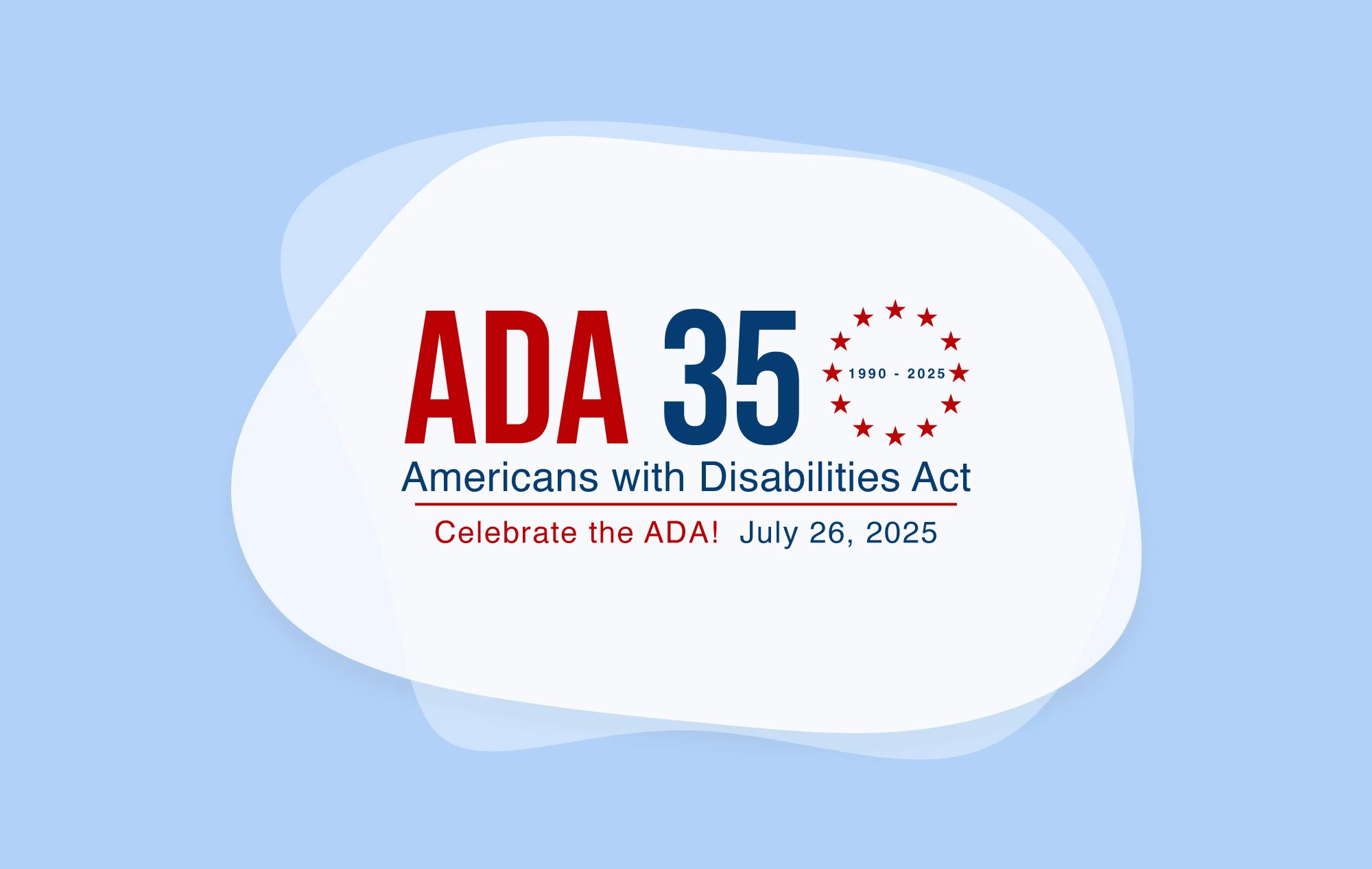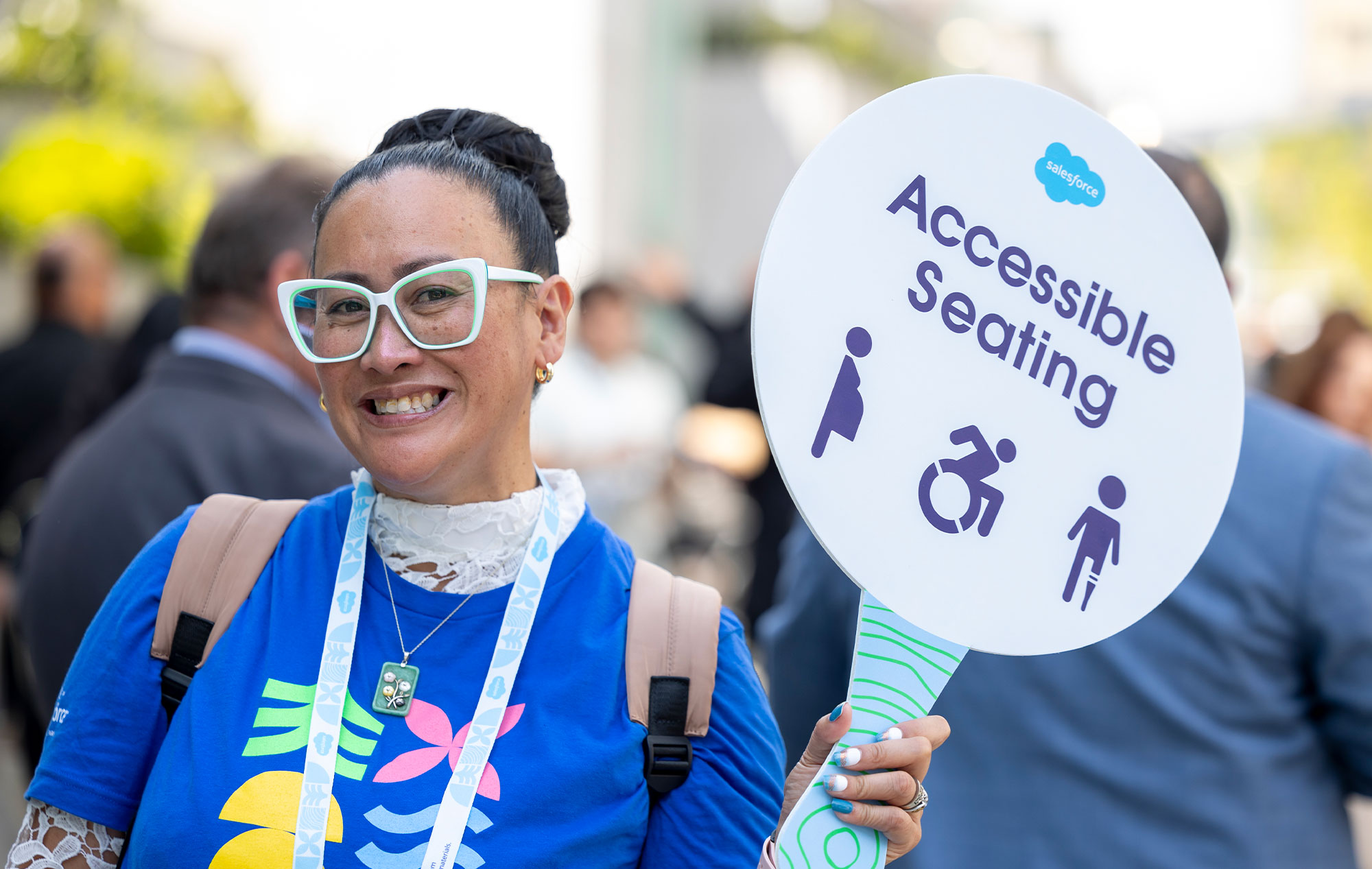What National Disability Independence Day Means for Today's Workplace
In the United States, July 26 is recognized annually as National Disability Independence Day, commemorating the signing of the Americans with Disabilities Act (ADA) into law in 1990.
The landmark legislation has served as a de facto bill of rights for Americans with disabilities by assuring their access to economic and civic opportunities. Its passage represented an unprecedented bipartisan effort to acknowledge the centuries of discrimination suffered by the disability community, and a fundamental change to how they live their lives.
As HR leaders and business executives observe National Disability Independence Day, the question isn't just about celebrating progress—it's about understanding why the workplace transformation promised by the ADA remains incomplete, and what you can do about it.
For instance, the disability employment gap persists at alarming levels. The unemployment rate for professionals with disabilities hovered around 9% in June 2025 compared to just 4% for their non-disabled peers, per the U.S. Department of Labor.
The story of the ADA remains a significant chapter in U.S. history and the ongoing struggle for disability rights. On the 35th anniversary of this important civil rights law’s passage, let’s take a closer look at its origins and how it has changed the lives of so many for the better.
The Disability Rights Movement That Changed American Business
The American disability movement began in earnest in the 1960s with grassroots efforts to resist the centuries-old notion that its members were defective, lacking, and needed to be segregated from civic life. Inspired by the manifestos of the broader civil rights struggles of the time, the movement rejected these cruel and paternalistic attitudes and advocated instead for full access to opportunities in employment, education, and public life.
As with other social movements, bringing about positive, meaningful change has required diligent and continued efforts from activists, members of the disability community, and their allies.
Eventually the tide of oppression would turn, culminating in the passage of several key pieces of anti-discrimination legislation, although much work remains.
The 504 Sit-Ins
Starting on April 5, 1977, the 504 Sit-Ins featured hundreds of protestors peacefully occupying federal buildings while demanding then-U.S. Secretary of Health, Education, and Welfare (HEW) Joseph Califano sign and enact regulations stipulated by Section 504 of the Rehabilitation Act of 1973 prohibiting recipients of federal funds from discriminating against people with disabilities.
Demonstrators protested across the United States, in Atlanta, Boston, Chicago, Denver, Los Angeles, New York City, Philadelphia, Seattle, and Washington, D.C.—where about 300 people staged a 28-hour sit-in at HEW offices.
In San Francisco, more than 100 disability rights activists occupied HEW offices for 25 days—the longest such protest at a federal office building in U.S. history.
These demonstrations ultimately forced Califano to sign the 504 regulations on April 28, 1977.
Section 508 of the Act, later updated in 1998, included standards advising that federal information distributed electronically also be accessible to those with disabilities. This important section was updated again in 2017 to clarify and expand its coverage regarding digital accessibility, among other improvements.
The Capitol Crawl
Each of these demonstrations was key to generating the momentum necessary for the eventual passing of the ADA. As Sam Proulx, accessibility evangelist at accessibility testing platform Fable, explains: “These accomplishments in the ongoing fight for equality are the results of legions.”
Efforts to pass the ADA reached a zenith in March 1990, at a critical demonstration known as the Capitol Crawl. Roughly 1,000 people marched from the White House to the U.S. Capitol Building, urging Congress to enact the ADA. Once there, many participants jettisoned their wheelchairs, crutches, and other mobility aids to crawl up its steps and highlight inaccessible architecture, as well as the need for many other reforms.
This demonstrated to the world just how inaccessible society has been for people with disabilities, with evocative imagery of the physical and political barriers that remain for so many excluded from civic life.
Among these participants was 8-year-old activist Jennifer Keelan-Chaffins.
Justin Dart, vice chair of independent federal agency the National Council on Disability (NCD), who attended the ceremony, wrote at the time: “It is the world’s first declaration of equality for people with disabilities.”
Challenges to the new law followed, with U.S. Supreme Court cases severely limiting the definition of “disability.” In Sutton v. United Airlines, the court ruled in favor of United Airlines, which refused to recognize twin sisters Karen Sutton and Kimberly Hinton’s visual myopia as a disability. Despite the fact that their conditions were fully correctable, the airline denied them employment. In Chevron USA, Inc. v. Echazabal, oil refinery worker Mario Echazabal’s claim that Chevron wouldn’t recognize his liver condition as a disability was denied, thus upholding his termination from work with the company.
Later, Congress bolstered protections when it passed the ADA Amendments Act of 2008 (ADAAA). This expanded the definition of “disability”—effectively nullifying the controversial decisions by the highest court—and enabling many more individuals to qualify for protection under the ADA.
Additional regulations issued by the U.S. Access Board in 2017 further expanded Section 508 Standards to include access to current-generation electronic and digital assets.
Impact on the Disability Community
The ADA has had a tremendous impact on the disability community. Peter Berg, project coordinator of technical assistance at the Great Lakes ADA Center, tells InclusionHub it “has brought about large-scale integration of people with disabilities across society. This, in itself, has been transformative for many.”
Here are just a few improvements he references:
- The addition of structural enhancements, such as elevators, ramps, U-shaped door handles, and lever-operated and door-push mechanisms have made the difference in being able to commute, work, attend school, stores, entertainment, and civic venues of all kinds.
- Access to information throughout public life has expanded due to the widespread use of sign-language interpreters.
- The ability for students of all ages to attend or remain in school has increased with access to large-print books, ZoomText, and orated exams.
- Access to entertainment and educational performances has improved, thanks to earphones and audio description devices.
Still, while the ADA’s prohibitions on employment discrimination have codified protections for millions, an overall increase in the employment of disabled people has yet to be achieved.
Why the Disability Employment Gap Persists Despite ADA Protections
Only about 42% people living with a disability are participating in the labor force, compared to 78% of persons without a disability, in part due to accessibility barriers prevalent throughout the professional world. But some companies are striving to make the workplace more accessible.
To counteract this so-called “disability employment gap,” for example, Salesforce launched its Workforce Navigators program in 2020, aiding skill-building for professionals with disabilities.
“With my experience over the years of being visually impaired, I've not found a software developer or a company that truly supported the accommodation of a blind person,” explains Strini Naidoo, an engineer who switched careers to IT after completing the program. “I’ve battled. I wish I knew about this 10 or 20 years earlier. I would have been far ahead in my career and advancement.”
Notably, most people agree that the underlying causes of underemployment in the disability community are varied, complex, and extend well beyond the limits of the ADA.
For instance, stereotypes that professionals with disabilities don’t belong in the workplace or are incapable of contributing still linger.
“It’s like, ‘Oh, someone who is blind, well, they’re not going to be able to do anything, there’s no way,’” explains Crystal Preston-Watson, a senior disability analyst at Salesforce who wears an eye patch. “There’s the perception that if you’re blind, you can’t be a developer. I know quite a few blind developers who are better than I could ever be.”
People with disabilities routinely brush up against the widespread belief in the professional world that “they’re not working alongside non-disabled peers in large organizations,” says Jessica Roth, Disabilities at Work Senior Manager in Salesforce’s Office of Accessibility.
Stigmatization and inaccessibility have many forms in the working world.
For instance, neurodiverse professionals routinely have to practice neurodivergent masking, a term referring to the ways they conceal or suppress elements of their neurodivergent traits or conditions to fit in with workplace or societal norms.
Kurt Iobst, an accessibility evangelist and senior success manager at Salesforce, describes the emotional exhaustion neurodivergent professionals regularly experience while masking.
“That just adds a layer of burden,” he explains. “You know that lead vest we wear at the dentist when taking an X-ray? It’s like wearing five or 10 of those while trying to exist, while trying to do our best work.”
The constant restrictions autistic professionals experience, such as “having to pretend that something is funny when we don’t understand,” is psychologically “draining,” he says.
So while the ADA has been transformational, many barriers and forms of discrimination endure.
Building ADA-Compliant Workplaces: Lessons From Disability Independence Day
The ADA remains a touchstone in the struggle for equal status for disabled Americans. It is the law of the land, but like many other legislative actions, one could argue it remains aspirational in its full implementation.
There is still much work to be done, and areas of particular focus recommended by the NCD, especially related to underemployment, include:
- Increasing relevant skills for disabled youth transitioning to the workforce.
- Improving work disincentives present in Social Security and Medicaid benefits that make it difficult for people with disabilities to afford healthcare or get the care they need to live.
- Improving employer incentives in both the public and private sectors.
“Going forward, [I’d] like to see the disabled community represented in leadership—both in government and in the private sector—and at all levels,” says Berg from the Great Lakes ADA Center. “People with disabilities make up the largest minority group in the country. Their perspective needs to be included in the broader conversation.”
We have a long way to go in realizing a professional world that fully embraces accessibility, inclusion, and belonging.
Still, there is reason for optimism.
More recent changes to the work environment, such as increased remote employment, flexible scheduling and virtual meeting options, and reliance on computing have proven that the work-from-home model works. For disabled people who are housebound or without work transport, this has been a watershed moment.
There’s been a proliferation in more inclusive hiring practices, such as asking for a job candidate’s accommodations, organizations communicating their commitments to accessibility and inclusion in job descriptions, and ensuring people with disabilities are reflected in leadership and marketing collateral.
Profound progress is also being made in the sphere of digital inclusion and accessibility to ensure compliance with ADA regulations and avert potentially costly lawsuits from disabled users.
In addition to the business case for accessibility and inclusion, more and more organizations are realizing the moral imperative they have to improve digital experiences for people with mental health disabilities, speech difficulties, learning disabilities, physical disabilities, language disorders, blindness or low vision, and for those who are d/Deaf or hard of hearing.
Such improvements make online access and functionality increasingly available to the disability community.
Among these:
- International standards organization the World Wide Web Consortium (W3C) originally introduced its Web Content Accessibility Guidelines (WCAG) in 1999 to improve the online experience for people living with a range of disabilities, including hearing, sight, movement, and cognitive ability—and has been updating these and striving for greater diversity and inclusion in technology and website design ever since.
- Google announced in 2020 that user experience would impact website search rankings—adding yet even more incentive for companies and organizations to ensure their sites include more accessible features, content, and designs.
- More tech titans are prioritizing accessibility and baking digital inclusion into product design, embodied by cloud-based customer relationship management software company Salesforce’s “shift left” approach.
- More and more groups within the public and private sectors are sharing online resources to help improve the digital accessibility and skills development of disabled individuals. The ADA National Network—comprising 10 regional centers funded by the federal National Institute on Disability—is just one.
- Artificial intelligence is empowering professionals with disabilities, as well, when designed with accessibility in mind. For example, AI-powered platform Retain helps employees with disabilities overcome workplace accessibility challenges through customized tools that adapt to their unique working styles and preferences. Assistive technology software Cephable transforms how users interact with technology through a variety of alternative input methods powered by private, offline artificial intelligence.
Salesforce is a founding partner of InclusionHub, a resource for digital accessibility dedicated to helping businesses prioritize digital inclusion. Be sure to check out all the InclusionHub Podcast’s episodes and corresponding transcripts. Happy National Disability Independence Day!






Leave a Comment